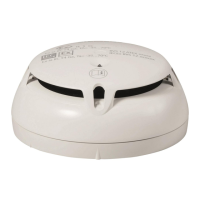Structure and function
26
Building Technologies 007004_k_en_--
Fire Safety & Security Products 16.04.2009
3.4 Function
3.4.1 Parameter sets
The parameter sets influence the detection behavior of the detectors and
specifically set them to the expected fire phenomena and ambient influences in the
environment to be monitored.
All parameter sets are programmed in the detectors. During commissioning, the
optimum parameter set must be selected for the conditions at the place of
installation. On a FDnet detector line, this is carried out at the control panel. On a
collective or MS8 detector line this is done with the detector exchanger and tester.
On a FDnet detector line, the parameter set must always be set explicitly. Unless a
parameter set is selected in collective or MS8 operation, the detector works with
the default parameter set '0'. In this case the number of the selected parameter set
is always '0'.
See also
Parameter sets: Neural fire detec
tor [J 42]
Parameter sets: Wide-spectrum s
moke detector [J 49]
Parameter sets: Heat detector [J 52]
3.4.2 Danger levels
The detector's signal processing efficiently distinguishes between fire events and
deceptive phenomena. The basis for reaching a danger level is not only given by
measured values exceeding a "response threshold"; moreover, the smoke density
progression is observed over a longer period of time and assessed by the
algorithms.
Fire detectors can transmit the following danger levels to the control panel:
Danger level Meaning Comment
0 No danger Normal condition
1 Check situation A different parameter set should
potentially be selected (inappropriate
application)
2 Warning Possible danger
3 Alarm Fire
Notes
z The evaluation of the danger level and the decisions to be taken (e.g. activation
of remote transmission) are configured in the control panel.
z On a collective line only the danger levels 0 and 3 can be transmitted to the
control panel.

